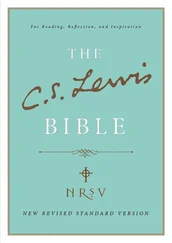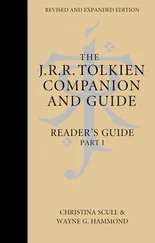Standard Template Library Programmer's Guide
Здесь есть возможность читать онлайн «Standard Template Library Programmer's Guide» весь текст электронной книги совершенно бесплатно (целиком полную версию без сокращений). В некоторых случаях можно слушать аудио, скачать через торрент в формате fb2 и присутствует краткое содержание. Жанр: Программирование, Справочники, на английском языке. Описание произведения, (предисловие) а так же отзывы посетителей доступны на портале библиотеки ЛибКат.
- Название:Standard Template Library Programmer's Guide
- Автор:
- Жанр:
- Год:неизвестен
- ISBN:нет данных
- Рейтинг книги:4 / 5. Голосов: 1
-
Избранное:Добавить в избранное
- Отзывы:
-
Ваша оценка:
- 80
- 1
- 2
- 3
- 4
- 5
Standard Template Library Programmer's Guide: краткое содержание, описание и аннотация
Предлагаем к чтению аннотацию, описание, краткое содержание или предисловие (зависит от того, что написал сам автор книги «Standard Template Library Programmer's Guide»). Если вы не нашли необходимую информацию о книге — напишите в комментариях, мы постараемся отыскать её.
Standard Template Library Programmer's Guide — читать онлайн бесплатно полную книгу (весь текст) целиком
Ниже представлен текст книги, разбитый по страницам. Система сохранения места последней прочитанной страницы, позволяет с удобством читать онлайн бесплатно книгу «Standard Template Library Programmer's Guide», без необходимости каждый раз заново искать на чём Вы остановились. Поставьте закладку, и сможете в любой момент перейти на страницу, на которой закончили чтение.
Интервал:
Закладка:
[2] Note that this is not necessarily the information you are interested in! Usually, if you're testing whether an element is present in a range, you'd like to know where it is (if it's present), or where it should be inserted (if it's not present). The functions lower_bound , upper_bound , and equal_range provide this information.
[3] This difference between Random Access Iterators and Forward Iterators is simply because advance is constant time for Random Access Iterators and linear time for Forward Iterators.
lower_bound , upper_bound , equal_range
merge
Category: algorithms
Component type: function
Merge is an overloaded name: there are actually two merge functions.
template
OutputIterator merge(InputIterator1 first1, InputIterator1 last1, InputIterator2 first2, InputIterator2 last2, OutputIterator result);
template
OutputIterator merge(InputIterator1 first1, InputIterator1 last1, InputIterator2 first2, InputIterator2 last2, OutputIterator result, StrictWeakOrdering comp);
Merge combines two sorted ranges [first1, last1) and [first2, last2) into a single sorted range. That is, it copies elements from [first1, last1) and [first2, last2) into [result, result + (last1 – first1) + (last2 – first2)) such that the resulting range is in ascending order. Merge is stable, meaning both that the relative order of elements within each input range is preserved, and that for equivalent [1] elements in both input ranges the element from the first range precedes the element from the second. The return value is result + (last1 – first1) + (last2 – first2) .
The two versions of merge differ in how elements are compared. The first version uses operator< . That is, the input ranges and the output range satisfy the condition that for every pair of iterators i and j such that i precedes j , *j < *i is false . The second version uses the function object comp . That is, the input ranges and the output range satisfy the condition that for every pair of iterators i and j such that i precedes j , comp(*j, *i) is false .
Defined in the standard header algorithm, and in the nonstandard backward-compatibility header algo.h.
For the first version:
• InputIterator1 is a model of Input Iterator.
• InputIterator2 is a model of Input Iterator.
• InputIterator1 's value type is the same type as InputIterator2 's value type.
• InputIterator1 's value type is a model of LessThan Comparable.
• The ordering on objects of InputIterator1 's value type is a strict weak ordering , as defined in the LessThan Comparable requirements.
• InputIterator1 's value type is convertible to a type in OutputIterator 's set of value types.
For the second version:
• InputIterator1 is a model of Input Iterator.
• InputIterator2 is a model of Input Iterator.
• InputIterator1 's value type is the same type as InputIterator2 's value type.
• StrictWeakOrdering is a model of Strict Weak Ordering.
• InputIterator1 's value type is convertible to StrictWeakOrdering 's argument type.
• InputIterator1 's value type is convertible to a type in OutputIterator 's set of value types.
For the first version:
• [first1, last1) is a valid range.
• [first1, last1) is in ascending order. That is, for every pair of iterators i and j in [first1, last1) such that i precedes j , *j < *i is false .
• [first2, last2) is a valid range.
• [first2, last2) is in ascending order. That is, for every pair of iterators i and j in [first2, last2) such that i precedes j , *j < *i is false .
• The ranges [first1, last1) and [result, result + (last1 – first1) + (last2 – first2)) do not overlap.
• The ranges [first2, last2) and [result, result + (last1 – first1) + (last2 – first2)) do not overlap.
• There is enough space to hold all of the elements being copied. More formally, the requirement is that [result, result + (last1 – first1) + (last2 – first2)) is a valid range.
For the second version:
• [first1, last1) is a valid range.
• [first1, last1) is in ascending order. That is, for every pair of iterators i and j in [first1, last1) such that i precedes j , comp(*j, *i) is false .
• [first2, last2) is a valid range.
• [first2, last2) is in ascending order. That is, for every pair of iterators i and j in [first2, last2) such that i precedes j , comp(*j, *i) is false .
• The ranges [first1, last1) and [result, result + (last1 – first1) + (last2 – first2)) do not overlap.
• The ranges [first2, last2) and [result, result + (last1 – first1) + (last2 – first2)) do not overlap.
• There is enough space to hold all of the elements being copied. More formally, the requirement is that [result, result + (last1 – first1) + (last2 – first2)) is a valid range.
Linear. No comparisons if both [first1, last1) and [first2, last2) are empty ranges, otherwise at most (last1 – first1) + (last2 – first2) – 1 comparisons.
int main() {
int A1[] = { 1, 3, 5, 7 };
int A2[] = { 2, 4, 6, 8 };
const int N1 = sizeof(A1) / sizeof(int);
const int N2 = sizeof(A2) / sizeof(int);
merge(A1, A1 + N1, A2, A2 + N2, ostream_iterator(cout, " "));
// The output is "1 2 3 4 5 6 7 8"
}
[1] Note that you may use an ordering that is a strict weak ordering but not a total ordering; that is, there might be values x and y such that x < y , x > y , and x == y are all false. (See the LessThan Comparable requirements for a more complete discussion.) Two elements x and y are equivalent if neither x < y nor y < x . If you're using a total ordering, however (if you're using strcmp , for example, or if you're using ordinary arithmetic comparison on integers), then you can ignore this technical distinction: for a total ordering, equality and equivalence are the same.
Читать дальшеИнтервал:
Закладка:
Похожие книги на «Standard Template Library Programmer's Guide»
Представляем Вашему вниманию похожие книги на «Standard Template Library Programmer's Guide» списком для выбора. Мы отобрали схожую по названию и смыслу литературу в надежде предоставить читателям больше вариантов отыскать новые, интересные, ещё непрочитанные произведения.
Обсуждение, отзывы о книге «Standard Template Library Programmer's Guide» и просто собственные мнения читателей. Оставьте ваши комментарии, напишите, что Вы думаете о произведении, его смысле или главных героях. Укажите что конкретно понравилось, а что нет, и почему Вы так считаете.











